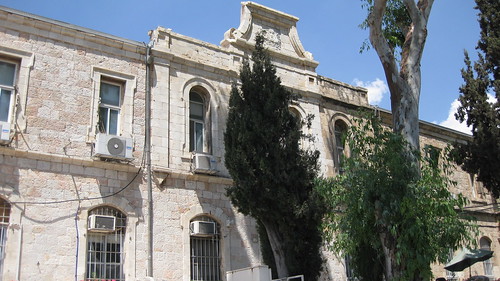Here, the range of history is much wider, but there are also large stretches of time in which most of the land was uninhabited (especially as compared to today). Most of the architecture that can be found here is also just less than a century old. But those buildings that predate the modern State are what really fascinates me.
The Ottoman Empire ruled in Israel from 1517, when the Turks defeated the Mamelukes, until 1917, when British forces defeated them in the Battle of Jerusalem. A brief summary of the Ottoman period of Israel is here.

This is the Ministry of Health (Misrad HaBriut) office on Yaffo Street. I don't know what year it was built, but note the bas-relief emblem of the Ottoman Empire. (If you're looking at this on the blog site, you can see an illustrated version of this emblem on the right side.)(Until I change the layout.)

Across the street is entrance to the shuk, Maḥane Yehudah. I once knew a Turkish immigrant (oleh ḥadash) and told him that I was looking for vestiges of the Ottoman period. This is what he immediately named.

I love the ingenuity of this roof: protect from rain, but let the hot air out.
The unsightly fences are there because of the railway construction, which is due to finish in about a century or two.
Inside the shuk, this sign marks the entrance to the open shuk (i.e. uncovered portion) of Maḥane Yehudah. The Hebrew-only sign states that it is under the auspices of the Jewish Jerusalem City Council. The date: 5681, which was 1920-21 on the secular calendar.

I was going to show you a photo of the authentic Turkish toilets inside the men's room, but thought better of the plan once I got inside with my camera. I recommend you stick to the pristine photos in that link.
I'm hoping to find some photography of Maḥane Yehudah back in the day. And in future postings I will continue my hunt for the remains of Turkish Israel.




